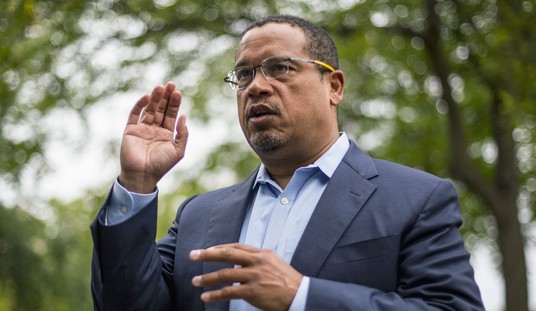As a follow-up to my earlier post on the age problem facing the Democratic Party, a new poll from a Democratic pollster shows that the risk for the Left is actually much larger than The Hill assumes. The poll from Greenberg Quinlan Rosner shows a significant opportunity for Democrats to narrowly take control of the Senate in 2016, but that millennials are barely engaged in the election. Nor are other Democratic constituencies generating anywhere near the heat of Republicans, gearing up for some of their own hope and change after eight years of Obama.
Here’s the key graph from the poll. “RAE” stands for “rising American electorate,” better known as the Barack Obama coalition — and perhaps better described as such, too. Non-RAE respondents have a 14-point edge in enthusiasm for 2016, 71/57, and Republicans a five point edge over Democrats and 12 points over independents.
The GQR poll of the Senate battlegrounds is rather murky at best, although Greenberg makes the sunniest assumptions there. The MOE is ±4.9%, and three of the four races fall within it. The overall battleground poll for the Senate only has Democrats up by three, hardly a compelling lead this far out — and with the above enthusiasm numbers.
Greg Sargent writes that this should be a warning alarm to Democrats:
Unmarried women, minorities, and particularly millennials are less interested in next year’s voting than seniors, conservatives, and white non-college men are. Non-college women — a group the Clinton camp is reportedly eyeing as a way to expand on the Obama coalition — are also less interested.
“Unmarried women are a key dynamic in American politics,” Page Gardner, the president of Women’s Voices Women Vote Action Fund, tells me. “It’s clear that the party or candidate who can increase turnout of unmarried women and the other segments of the Rising American Electorate will be well-positioned for victory in 2016.”
Now, obviously there is a very long way to go, and plenty of time for these voter groups to get more engaged. If Clinton wins the Democratic nomination, and the prospect of electing the first female president seems increasingly within reach, you could see engagement kicking in much more substantially. (It will be interesting to see how non-college, unmarried, minority and millennial women respond.)
But Greenberg’s pollsters are sounding the alarm now, warning that Democrats need to take more steps to tailor their message towards boosting the interest level among these voters. As Stan Greenberg outlines in his new book, America Ascendant, the key to engaging these voters is two-fold. It isn’t enough to simply outline bold economic policies to deal with college affordability, child care (universal pre-K), workplace flexibility (paid family and sick leave), and so forth, though those things are crucial. What’s also required to engage these groups, Greenberg argues, is a reform agenda geared to reducing the influence of the wealthy, the lobbyists, and the special interests over our politics.
This may be a bigger red flag than even Sargent sees. For most of 2015, the media has focused on the 2016 primaries in both parties. There is clearly media-consumer interest, and on the Democratic side, a front-runner who is already well known to their voters. The lack of interest at this stage looks a lot less like the normal cycle of late engagement than a chronic lack of enthusiasm for the same old choices.
Put it another way: Hillary Clinton has been around Washington DC for 23 years and counting. Nancy Pelosi and the Democratic leadership team has been around for longer than that. How does one sell Hillary and Pelosi as the vanguard of reform? Barack Obama could make that claim in 2007/8 because of his relative detachment from Washington DC, plus his youth and background. Without that kind of candidate, Democrats become the party of the status quo — and that’s not going to sell among RAEs, as Sargent and Greenberg surmise.
Republicans, however, have options to make themselves the reform option and to engage at least some of the so-called RAE demos. A younger candidate, or an outsider candidate, might help; running against the stagnation of the last seven years by proposing structural regulatory and tax reforms could also help, but might be more wonky than effective. What Republicans have to do is actively engage these voters, not with 30,000-foot messaging about philosophy and ideology but by getting on the ground and getting to know them. Only then can they sell a conservative agenda not just as a means in itself, but as a practical solution for the problems voters face in their own lives.
That’s exactly what my upcoming book, Going Red (Crown Forum), will discuss. It comes out in April 2016. I’ll have more on it in the next few weeks.









Join the conversation as a VIP Member